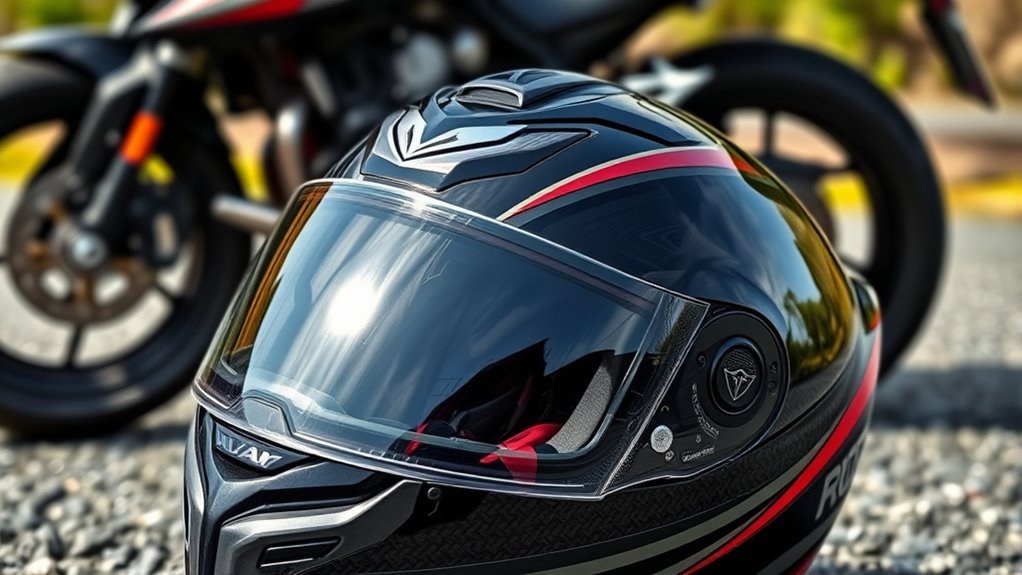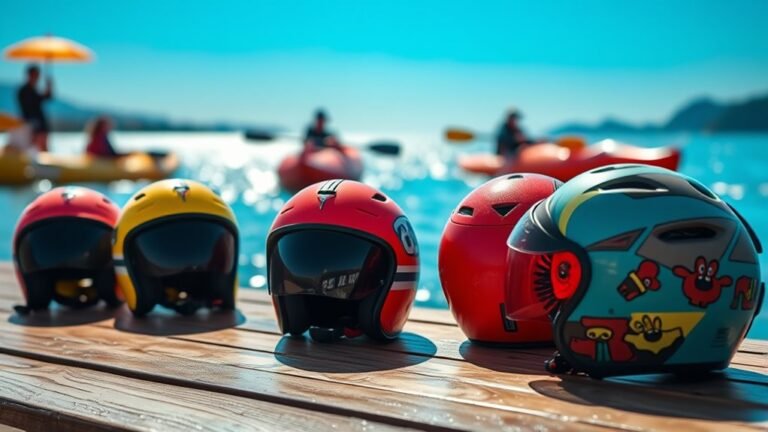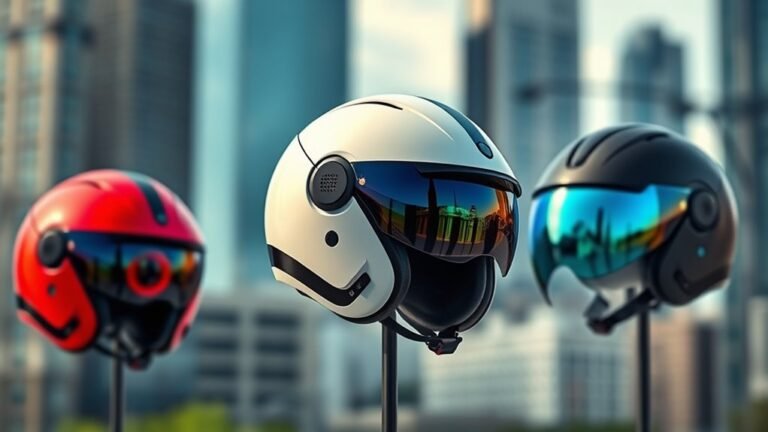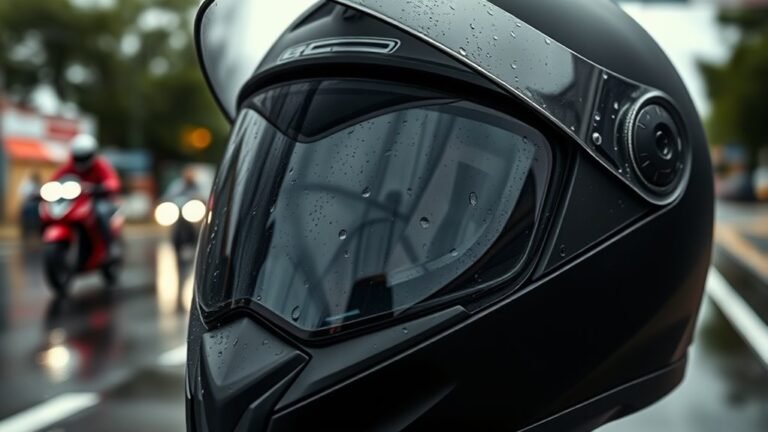Best Dual Visor Motorcycle Helmets
When looking for the best dual visor motorcycle helmets, focus on those with clear inner visors and tinted outer visors for ideal glare reduction. Verify they meet safety standards like DOT and ECE certifications. Consider features such as easy visor switching, comfort fit, and effective ventilation. Helmets like the Shoei GT-Air II and HJC IS-MAX II are highly regarded. You’ll find that understanding the benefits and maintenance tips can further enhance your experience on the road.
Top Features of Dual Visor Helmets
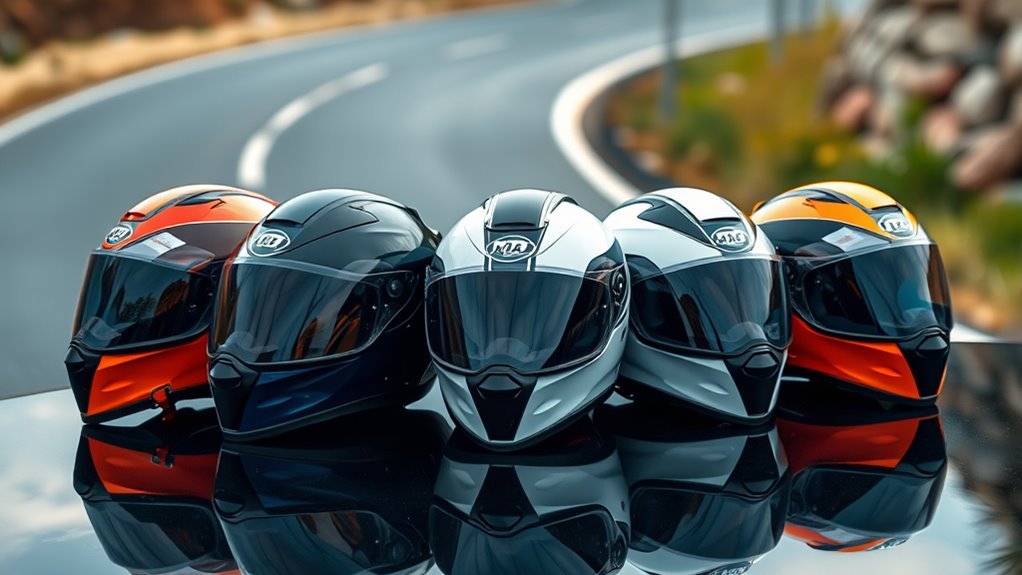
When you’re considering a dual visor motorcycle helmet, understanding its key features can greatly enhance your riding experience. One of the primary aspects is the visor types; typically, these helmets come with a clear inner visor and a tinted outer visor for sun protection. This design allows you to switch between visors easily, adapting to changing light conditions without compromising safety.
Moreover, it’s vital to ascertain that the helmet meets safety standards, such as DOT or ECE certifications, which guarantee adequate protection in the event of an accident. The dual visor system not only enhances visibility but also contributes to overall comfort during long rides. Knowing these features helps you make an informed choice that aligns with your desire for freedom on the road.
Benefits of Using Dual Visor Helmets
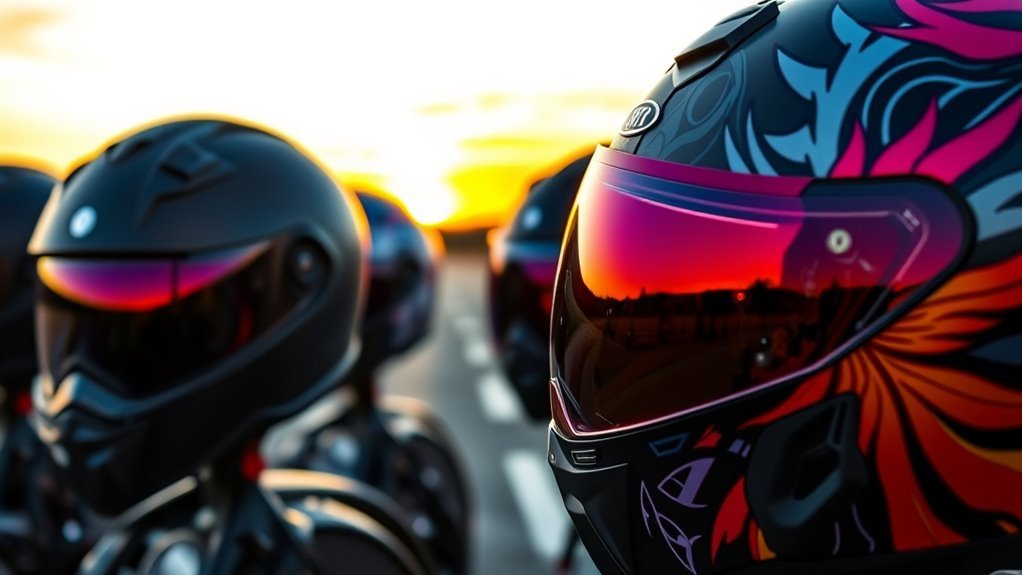
Using a dual visor motorcycle helmet offers several advantages that can greatly enhance your riding experience. With built-in visors, you gain enhanced visibility, essential for maneuvering through diverse environments and lighting conditions. The dual visor system also provides significant safety benefits, reducing glare and improving overall awareness on the road. This means you’re more likely to spot potential hazards early, ensuring safer rides.
Here’s a quick comparison of the key benefits:
| Benefit | Description | Impact on Riding |
|---|---|---|
| Safety Benefits | Reduces glare and enhances awareness | Improved hazard detection |
| Visibility Enhancement | Adapts to varying light conditions | Better navigation |
| Convenience | Eliminates need for sunglasses | Streamlined riding |
| Comfort | Less eye strain during long rides | Increased endurance |
| Versatility | Suitable for various weather conditions | Year-round usability |
Key Considerations When Choosing a Dual Visor Helmet
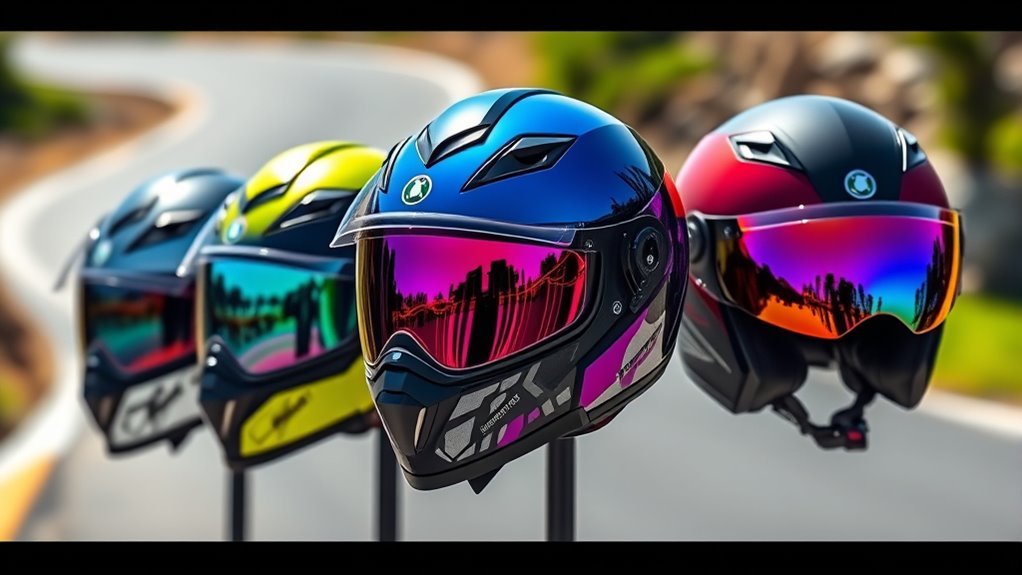
How do you choose the right dual visor helmet for your riding needs? Start by examining safety standards. Look for helmets that meet DOT, ECE, or Snell certifications, guaranteeing they provide adequate protection. Next, consider the visor types. A dual visor helmet typically features a clear outer visor and a tinted inner one, offering flexibility in varying light conditions. Make certain both visors are easy to operate and can be swapped out if necessary. Comfort is also key; verify the helmet fits snugly without being too tight. Finally, think about ventilation and weight, as these factors can greatly affect your riding experience. Balancing these considerations will help you find a helmet that supports your freedom on the road.
Reviews of the Best Dual Visor Motorcycle Helmets
Choosing the right dual visor motorcycle helmet can greatly enhance your riding experience, offering both safety and comfort. When evaluating options, consider helmets that meet established safety standards, ensuring reliable protection in case of impact. Look for models featuring a clear outer visor for ideal visibility and a tinted inner visor to shield your eyes from glaring sunlight. Popular visor types include drop-down visors and flip-up designs, each providing unique benefits for varying riding conditions. Helmets like the Shoei GT-Air II and HJC IS-MAX II are excellent examples, combining robust safety features with user-friendly visor mechanisms. By selecting a helmet that aligns with your riding style and safety needs, you can enjoy the freedom of the open road with confidence.
Maintenance Tips for Your Dual Visor Helmet
While maintaining your dual visor motorcycle helmet might seem straightforward, it’s essential for guaranteeing both its longevity and your safety on the road. Regularly inspect your helmet for damage, and use appropriate cleaning techniques. For the exterior, use a mild soap and water solution with a soft cloth. For visors, avoid ammonia-based cleaners that can scratch or weaken the material. If your visor gets too scratched, consider visor replacement to guarantee clear visibility.
| Task | Frequency | Notes |
|---|---|---|
| Clean exterior | Weekly | Use mild soap |
| Inspect for damage | Monthly | Check for cracks |
| Replace visor | As needed | Guarantee visibility |
| Store properly | Always | Use a helmet bag |
| Check straps | Before every ride | Guarantee secure fit |
Frequently Asked Questions
Are Dual Visor Helmets Suitable for All Riding Conditions?
Dual visor helmets aren’t necessarily suitable for all riding conditions. While they excel in varying weather conditions, providing sun protection and visibility, they may not perform as well in extreme temperatures or heavy rain. Your riding style also matters; if you’re tackling off-road trails or racing, a more specialized helmet could be beneficial. Ultimately, it’s about finding the right balance between comfort, protection, and the specific demands of your riding adventures.
How Do Dual Visors Impact Helmet Weight and Comfort?
Dual visors can impact helmet weight and comfort considerably. With the added structure, you might notice a shift in weight distribution, which can either enhance or detract from your comfort during long rides. If the helmet’s design balances well, it can feel lighter and more comfortable. However, if it’s poorly designed, the extra weight might lead to fatigue. Comfort factors like padding and fit are essential, so always prioritize those when choosing.
Can I Replace the Visors on a Dual Visor Helmet?
Absolutely, you can replace the visors on a dual visor helmet. Most helmets offer various visor types, allowing you to customize your ride. Depending on the brand, replacement options might include tinted, clear, or even anti-fog visors. Always check the manufacturer’s specifications to guarantee compatibility. Making these adjustments not only enhances your comfort but also gives you the freedom to adapt to different riding conditions. It’s all about riding with confidence and style!
Are Dual Visor Helmets Compatible With Communication Devices?
Yes, dual visor helmets can be compatible with communication devices, but it often depends on the specific model and helmet technology integration. Many modern helmets are designed with built-in features that accommodate Bluetooth headsets and microphones, allowing you to stay connected while riding. However, you should always check the manufacturer’s specifications to ascertain compatibility. This integration enhances your freedom on the road, enabling hands-free communication without compromising safety.
Do Dual Visor Helmets Provide Better UV Protection Than Single Visor Helmets?
Yes, dual visor helmets typically provide better UV protection than single visor helmets. The added layer often includes a tinted visor that helps block harmful UV rays while enhancing visor durability. This can reduce glare and improve visibility, allowing you more freedom on the road. Additionally, having two visors means you can switch them out depending on conditions, ensuring you’re equipped for any ride, while maximizing protection against the sun.
